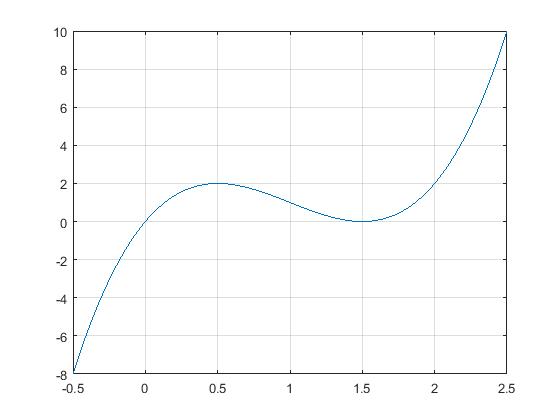As we mentioned in the Hint 1, the graph of  is obtained by translating the graph of
is obtained by translating the graph of  horizontally by
horizontally by  . Note that the shape of the graph doesn't change under the translation.
. Note that the shape of the graph doesn't change under the translation.
From part (a), we know that  is strictly increasing on
is strictly increasing on  , and strictly decreasing on
, and strictly decreasing on  . Also,
. Also,  has its maximum value
has its maximum value  at
at  and
and  . Based on this, we can draw the following graph of
. Based on this, we can draw the following graph of  ;
;

From the graph we can easily see that if we move the graph of  horizontally to the left (i.e.,p<0), the maximum occurs at
horizontally to the left (i.e.,p<0), the maximum occurs at  , because of
, because of  for
for  . Therefore, for
. Therefore, for  , the function
, the function  has its maximum
has its maximum  , so that
, so that  .
.
On the other hand, for any  , we have
, we have  and actually
and actually  only occurs at
only occurs at  in the range
in the range  .
This implies that when we move the graph of
.
This implies that when we move the graph of  horizontally to the right (i.e.,p>0), if
horizontally to the right (i.e.,p>0), if  is in
is in ![{\displaystyle [0,2]}](https://wiki.ubc.ca/api/rest_v1/media/math/render/svg/120ef5837b0c64a40a2333f5aefd3c36fc458e91) , the maximum of
, the maximum of  is
is  . Therefore, for
. Therefore, for  , we get
, we get  . (by part (a), when
. (by part (a), when  , we also have
, we also have  .
.
Furthermore, if we move the graph of  horizontally to the right by
horizontally to the right by  , (i.e,
, (i.e,  ), the graph is strictly increasing on
), the graph is strictly increasing on ![{\displaystyle [0,2]}](https://wiki.ubc.ca/api/rest_v1/media/math/render/svg/120ef5837b0c64a40a2333f5aefd3c36fc458e91) , so that the maximum occurs at
, so that the maximum occurs at  . As a result,
. As a result,  for
for  .
.
To sum, we have





















![{\displaystyle [0,2]}](https://wiki.ubc.ca/api/rest_v1/media/math/render/svg/120ef5837b0c64a40a2333f5aefd3c36fc458e91)





